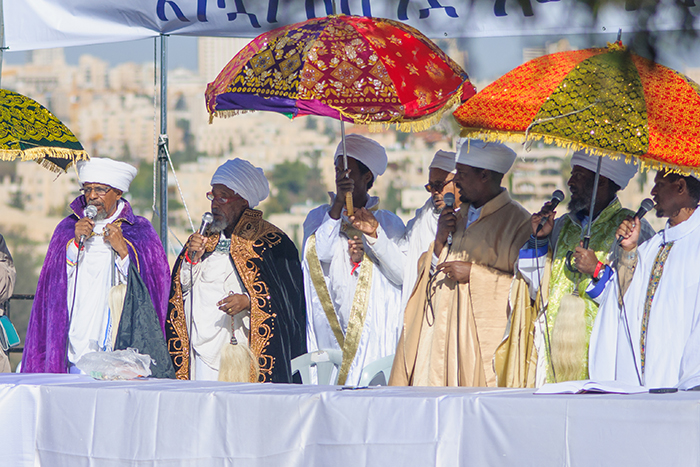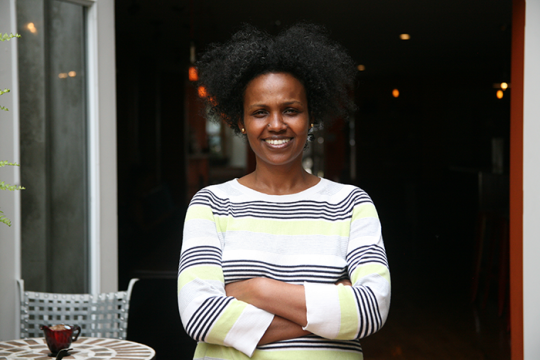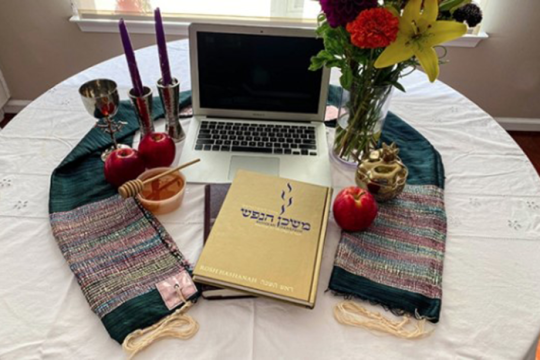
Sigd, an Ethiopian Jewish holiday, falls 50 days after Yom Kippur and commemorates the community's yearning for a home in Israel.
The Kesim, the spiritual leaders of the [Ethiopian Jewish] community, [were taken] on a field trip in Jerusalem, the city they had dreamed about for years... The last stop for the day was the Kotel. One of the Kesim raised his hand and asked, "Where is Jerusalem?" Ya'akov, the tour guide, answered: "We've been in Jerusalem the entire day and we're now at the Kotel." The same Kes then asked, "Where is the Temple?" Ya'akov pointed towards the Temple Mount and said, "The Temple was there." All of the sudden, they all dropped to the ground, placed their faces on the ground and began weeping.
- From Sinai to Ethiopia by Rabbi Sharon Shalom
These Beta Israel [as Ethiopian Jews are known] pilgrims were part of the first wave of their community's to Israel in 1977. Traversing through Sudan and Egypt was extremely perilous, and many did not survive the trek.
For many generations, the Beta Israel had longed to reach Jerusalem in a quest to renew their covenant with God and find spiritual redemption. So strong was their desire that they created a holiday to pray for this miracle. They called it Sigd (meaning "worship") and celebrated it on the 50th day after Yom Kippur. This year, it is celebrated on November 13.
We do not know when Sigd came to be, but scholars place its origin sometime between 500-1400 years ago, long before any Ethiopian Jew made a pilgrimage to Jerusalem.
The quest to reach Jerusalem was based on myths and stories told over generations. These stories fueled the community's beliefs as to what awaited them in the Promised Land. The brave people who made the journey to Israel in 1977 may have been the first to do so in modern times, but not the last. They were followed by 2 more organized pilgrimages -- "Operation Moshe" (1984) and "Operation Shlomo" (1991).
Today, Israel's Beta Israel community celebrates Sigd at the Armon HaNatziv promenade in Jerusalem. For many years, they did so without the holiday being recognized by the state. The Knesset finally declared Sigd as an official Israeli holiday in 2008.
The main holiday traditions originally included fasting, ritual bathing, and wearing white clothing as a sign of purity. On Sigd, leaders would read from a special liturgical book called "the Orit" atop a mountain symbolizing Mount Sinai. The Orit contains a translation of the some of the books of the Bible into Ge’ez, an Ethiopian Jewish liturgical language. Nowadays, the holiday is celebrated mostly with a large march alongside the promenade, accompanied by song and dance.
In recent years, various groups in Israel not of Ethiopian origin have joined the celebrations, including The Israel Reform Movement. Kehillat "Yuval" in Gedera became the first Reform congregation to hold an annual Sigd celebration in cooperation with the local Ethiopian community. The program, which includes learning about the holiday, eating traditional foods, and playing children's games, has been hailed as a great success by both communities.
The Beta Israel have reached the land of their dreams, but they still face discriminatory barriers to full acceptance, which negatively impact their socio-economic status, employment opportunities, participation in government, and more.
A famous song about the Ethiopian community's journey to Israel ends with the words: "Soon, a little longer, lift your eyes, one final effort before we reach Jerusalem. The journey still endures, but may it be that the Promised Land truly be reached speedily and in our time."
Related Posts

Cuban American and Jewish: Exploring the History and Intersections of My Communities

Interview with Beejhy Barhany, Owner of Tsion Café in Harlem

